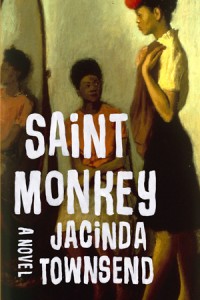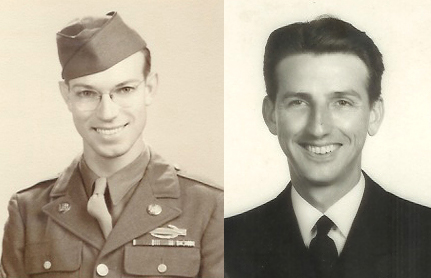Monthly Archives: August 2015
SOKY Reads 2015
Comments Off on SOKY Reads 2015
Filed under Events
The Testimony of the Spirits
In  their Junior year the Class of 1922 put on “The Second Annual Anti-Homesick Treatment,” the fourth portion of which was a “grand opera” that tells the story of a new student caught between the Spirit of Homesickness and the Spirit of the Institution. In order to defeat Homesickness the Institution calls forth the Spirits of Friendship, Hard Work, Loyalty, Knocking, Class and Beauty. For the incoming freshman we give you the Testimony of the Spirits:
their Junior year the Class of 1922 put on “The Second Annual Anti-Homesick Treatment,” the fourth portion of which was a “grand opera” that tells the story of a new student caught between the Spirit of Homesickness and the Spirit of the Institution. In order to defeat Homesickness the Institution calls forth the Spirits of Friendship, Hard Work, Loyalty, Knocking, Class and Beauty. For the incoming freshman we give you the Testimony of the Spirits:
Hard Worked Students:
We study hard both by night and day
And that’s the way we always play
But since no labor we ever shirk
We must just here get at our work
Spirit of Homesickness
Right here methinks I’ll take my stand
Some new student may happen by
I’ll grab the poor thing by the hand
And teach her how to say good bye
I’ll try to get her good and blue
And get her ready to skidoo
My mission is where’er I roam
To get ’em blue and send ’em home
New Student
My home I love so dearly
Is far away from me
I begin to feel so queerly
What can the matter be
What can the matter be
I feel so gloomilee
And I fear some frightful illness
Has seized a hold of me
Comments Off on The Testimony of the Spirits
Filed under University Archives
V-J Day: “It has passed like a tornado”
Kentuckians heard the first report on August 13, 1945: the war with Japan was over. Stationed at a center for returning servicemen in Miami, Florida, Ohio County native Dee Perguson reported that “a scream rose to the roof” among his fellow soldiers listening to the radio. On duty at an air base in India, McLean County native John Owens witnessed joyful men “firing off flare guns, machine guns, pistols and hollering at the top of their voices.”
Unfortunately, the report was premature and quickly retracted. As surrender negotiations continued, Perguson stayed close to the radio, “hoping to hear the longed-for news.” Angry at both the false report and Japan’s apparent recalcitrance, he declared himself “all in favor of dropping some more atomic bombs to help them decide to accept.”
Still, when the surrender was confirmed on August 15 — Victory in Japan Day — Perguson had a hard time believing that, at last, “the United States is not at war.” Navy officer Chester Travelstead, stationed in Seattle, agreed. Writing to his mother, WKU music teacher Nelle Travelstead, of the atomic bomb, the negotiations and the surrender, he remarked that “It has passed like a tornado.”
But there was little calm after the storm. First came the celebrations. In Miami, Dee Perguson witnessed streets filled with people and cars, a Navy band playing, Russian trainees bellowing out songs, and soldiers and sailors trading hats in a communal expression of joy. Bars and liquor stores had closed the moment the surrender was announced, but “many people who had prepared for the day had their bottles.” In Seattle, Chester Travelstead wrote, “Everybody kissed everybody. Paper was thrown from the buildings by the wagonload . . . . The horns tooted a constant din; people shouted and ran.”
Then came the avalanche of work, gathering force since V-E Day, that would be necessary to accomplish the orderly demobilization of millions of soldiers. The day after V-J Day, Travelstead found himself deluged with directives and orders. Perguson, working in one of many Miami hotels commandeered by the military, expected to be kept busy either reassigning soldiers who remained in service or providing occupational counseling to veterans returning to civilian life. And both men were thinking about where they stood in the long line of servicemen eager to get their discharge papers, go home and get on with their lives.
Letters of Kentuckians about V-J Day are part of the Manuscripts & Folklife Archives collections of WKU’s Department of Library Special Collections. Click on the links to access finding aids. For other collections, search TopSCHOLAR and KenCat.
Comments Off on V-J Day: “It has passed like a tornado”
Filed under Manuscripts & Folklife Archives
Go Set a Watchman

Go Set a Watchman by Harper Lee
On July 14, 2015 Harper Lee’s much anticipated and controversial novel Go Set a Watchman came out in bookstores. The author of the American classic To Kill a Mockingbird wrote Watchman prior to Mockingbird. The new novel follows Mockingbird’s narrator Jean Louise “Scout” Finch some twenty years later as she returns home to Maycomb, Alabama changed by postwar industrialism and especially tense amid the Civil Rights era. Watchman has stirred considerable controversy as readers speculate the reasons for its publication so late in Lee’s life – 55 years after her first novel – and critics debate the novel’s quality and whether it should be viewed as a manuscript for To Kill a Mockingbird, its sequel, or a separate work in its own right.

To Kill a Mockingbird 1962 movie of Harper Lee’s classic novel
Go Set a Watchman (PS3562 .E353 G6 2015, Leisure Reading Collection) is already the bestselling novel of 2015 and has also prompted a renewed interest in the earlier work To Kill a Mockingbird (PS3562 .E35x T6, Cravens 8th floor) and the movie (VR10708, VPAL). To find out more about the author, see: The Mockingbird Next Door: Life with Harper Lee by Marja Mills (PS3562 .E353 Z75 2014, WKU Leisure Books), Harper Lee: A Twentieth-Century Life by Kerry Madden (PS3562 .E353 Z76 2009, ERC), On Harper Lee: Essays and Reflections by Alice Hall Petry (PS3562 .E353 Z87 2006), and Mockingbird: A Portrait of Harper Lee by Charles J. Shields (PS3562 .E353 Z87 2006).
Comments Off on Go Set a Watchman
Filed under General, Latest News, Uncategorized
WKU Libraries’ International Year of South Africa Bibliography
In cooperation with WKU’s “International Year of South Africa, 2015-2016” series, WKU Libraries has compiled a multidisciplinary bibliography with almost 100 resources pertaining to South Africa in fields like: anthropology, art, economics, history, literature, music, political science, sociology, and travel & geography. The bibliography also includes DVDs of popular South African films and documentaries, CDs by South African musicians, and web resources for travelers.
Whether you are interested in books like Nobel Prize winner Nadine Gordimer’s last book No Time Like the Present (PR9369.3 .G6 N6 2012 in the Leisure Reading Collection on the 4th floor of Cravens library) or want to visit our Visual and Performing Arts Library on the 2nd floor of Cravens library for music ranging from Die Antwoord to Miriam Makeba, or recent movies District 9 and Mandela: Long Walk to Freedom, or are even interested in going to South Africa and want to check out Insight Guides South Africa (REF DT1717 .S68 in the Reference room 1st floor Helm library) or our links to the CIA World Factbook or the U.S. State Department page, this bibliography is a great comprehensive guide to learning about all things South Africa!
You can easily locate information about WKU International Year of South Africa and the bibliography with the links below:
IYO-South Africa for the International Year… page
Bibliography for the IYO South Africa WKU Libraries Bibliography
Comments Off on WKU Libraries’ International Year of South Africa Bibliography
Filed under General, Latest News, New Stuff, Stuff, Uncategorized
The Little Colonel & Pewee Valley, subject of additional study
On July 2, 2015, I was delighted to share my research on Annie Fellows Johnston with Dawn Sardella-Ayres, a Ph.D. candidate in Children’s Literature from Homerton College of the University of Cambridge. Mrs. Sardella-Ayres’ thesis will focus on the role of place in the novels. Many Little Colonel fans (of the 1935 Shirley Temple movie as well as the set of children’s novels) will envy the day we spent guided by Donna Russell, owner of Edgewood in Pewee Valley, Kentucky. Our tour included the interior of The Beeches, the interior of Bemersyde, the Presbyterian Church, the interior of Edgewood and so many sites made real to Annie Fellows Johnston’s faithful readers. The Little Colonel books were wildly popular with children as early as 1895 and are still being reprinted today. Asked by the American Library Association to defend her novels as having “too much heart interest,” Johnston explained that boys with apples are hardly recognizable as suitors to young girls who have only had adult fiction and fairy tales from which to draw their impressions of courtship.
To learn more about Kentucky author Annie Fellows Johnston’s influence on children and adults worldwide, read “The Little Colonel: A Phenomenon in Popular Literary Culture” at http://works.bepress.com/sue_lynn_mcdaniel/3/ If you are a Little Colonel fan, please contact me at sue.lynn.mcdaniel@wku.edu as my research is ongoing.
Comments Off on The Little Colonel & Pewee Valley, subject of additional study
Filed under Uncategorized
Sadie and Susie
It was a domestic tragedy that devolved into a spat about domestic servants. On June 7, 1945, Sadie Brown, the longtime African-American cook of prominent Bowling Green banker Max Nahm, was arguing with a male acquaintance in the kitchen of Nahm’s home at 14th and College Streets. The argument ended when he grabbed a knife, slashed her throat, and fled.
From her State Street home a block away, Martha Potter wrote the news to her children. For most of her life, Martha, who kept boarders in her home, relied heavily on African-American domestic servants, but the past few years had been a trial. Susie Potter, her own longtime cook and maid with whom she shared a surname, had resigned in 1937, and recently the attraction of better-paying war work had made replacements scarce.
But now it was Max Nahm’s turn to experience a “servant problem.” As the local African-American community reacted in shock to Sadie’s murder, Susie told Martha of their folk beliefs regarding violent death. “Susie said that murder blood was hard to wash out and that if it wasn’t washed up before the victim’s death it never would come out,” Martha informed her children. Sally, her current cook, had agreed, adding that “every time there is a thunderstorm that spot will come back.”
A few weeks later, Susie herself was cooking for Nahm, but his search for live-in help remained futile because no servant was willing to stay overnight in the house. Then Susie became ill, and she and Martha made a secret pact: after Susie’s recovery, she would return to work for Martha, not for Nahm.
The conspiracy continued through the fall of 1946, with Martha confiding to her children that “Max still says she is coming to work for him.” When Susie finally rejoined Martha’s household in spring 1947, Nahm “got mighty mad,” but Martha haughtily denied having “stolen” his cook. Although he found a replacement, the 84-year-old banker nursed a grudge that Martha attributed solely to ego. “Max is still pouting with me about Susie,” Martha wrote in June 1948–a full three years after Sadie Brown’s tragic death in his kitchen.
Martha Potter’s letters about the politics of domestic service are part of the Lissauer Collection in the Manuscripts & Folklife Archives section of WKU’s Department of Library Special Collections. Click here to access a finding aid. For more collections of Bowling Green family papers, search TopSCHOLAR and KenCat.
Comments Off on Sadie and Susie
Filed under Manuscripts & Folklife Archives






